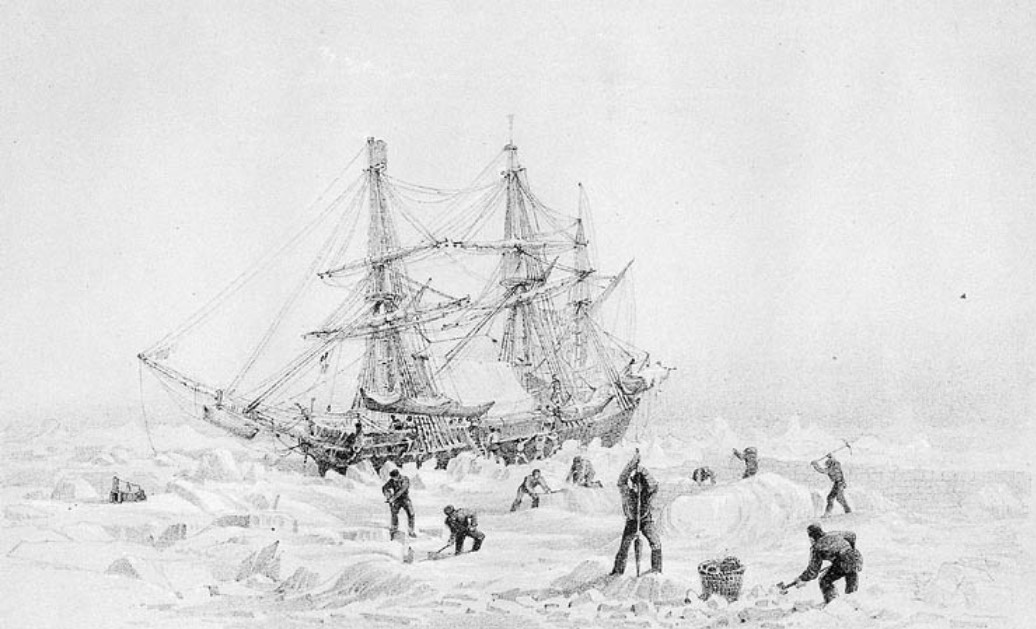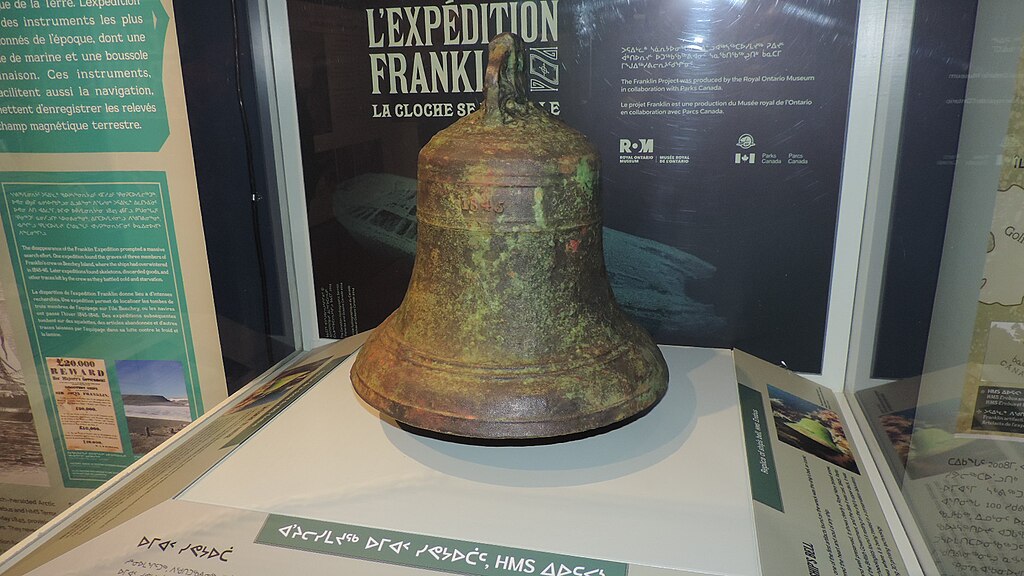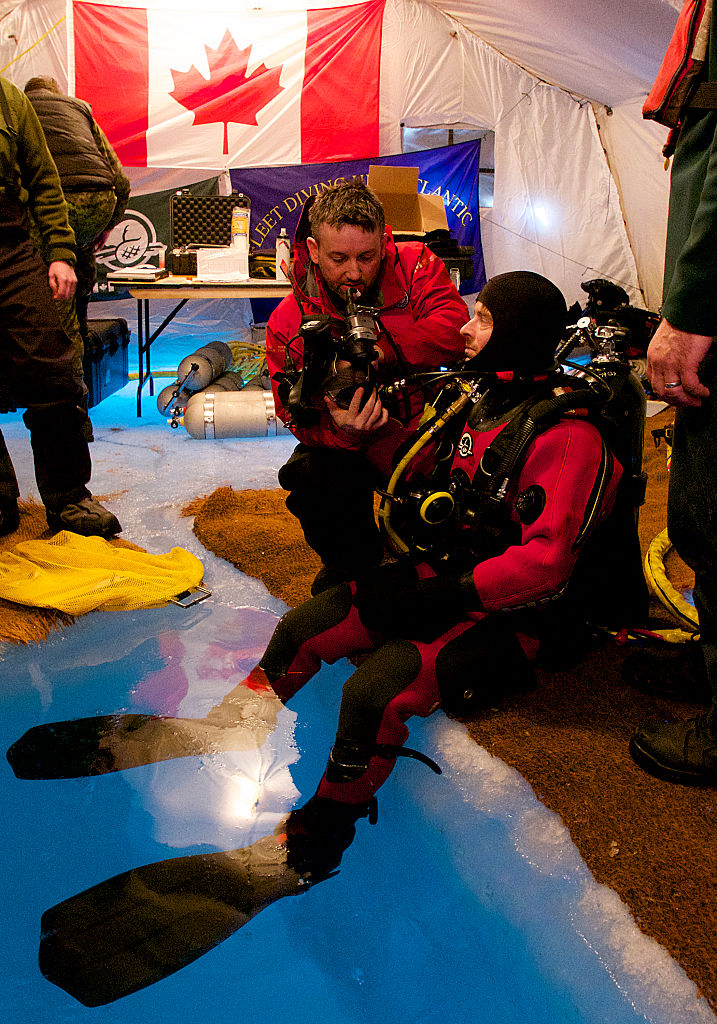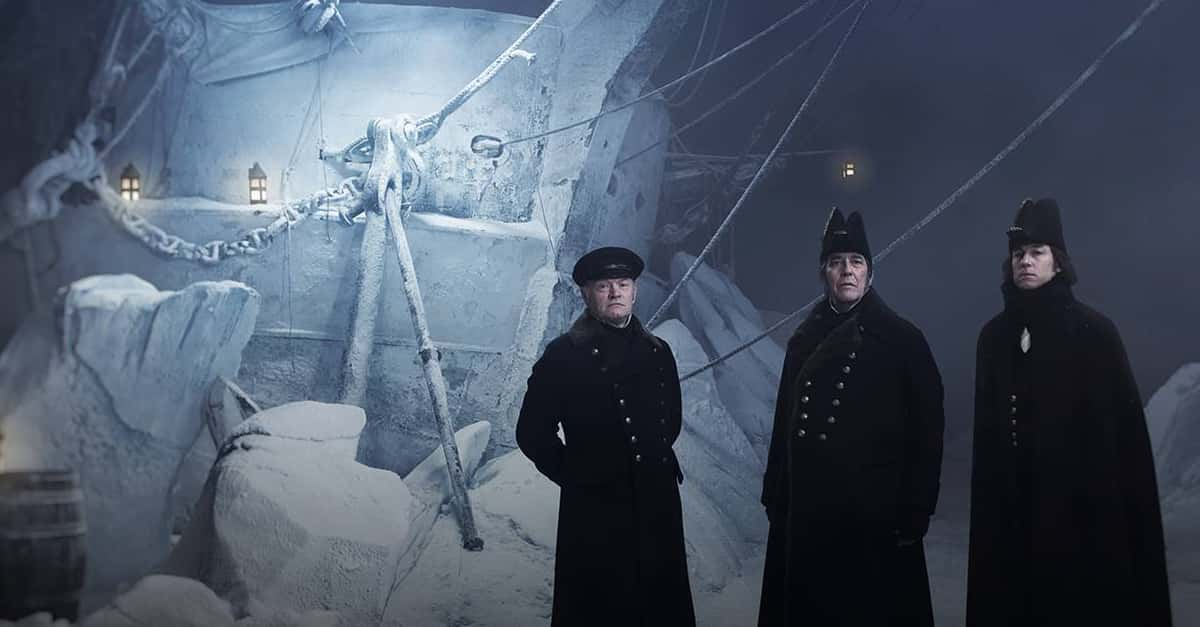In the summer of 2023, Parks Canada’s underwater archaeology team plunged into a new season of exploration in the icy waters of Nunavut. Their focus: the legendary shipwrecks of HMS Erebus and HMS Terror, lost on the ill-fated Franklin Expedition of 1845. What they discovered added chilling new layers to one of history’s greatest maritime mysteries.
A Doomed Quest For The Northwest Passage
Led by Sir John Franklin, the expedition set sail with 129 men in search of the elusive Northwest Passage. Both ships got trapped in sea ice near King William Island. They survived for a little while, but none of the crew lived to tell the tale. Over the years, abandoned campsites, skeletal remains, and Inuit testimony have told the grim tale of the crew’s fate.
 After George Back, Wikimedia Commons
After George Back, Wikimedia Commons
New Diving Operations Unearth Artifacts
The 2023 mission saw divers and remote-operated vehicles (ROVs) enter previously unexplored compartments on both ships. Conditions were ideal: calm waters and great visibility in the freezing depths allowed archaeologists to carefully document and recover a trove of artifacts. This included boots, dishes, navigation tools, and even personal correspondence.
The Galley Reveals Human Touches
Inside Erebus, the team accessed the galley—the kitchen of the ship—and found plates still stacked and utensils neatly placed, as if waiting for a meal that would never come. It was a sign of a possible sudden shift from order to chaos. The well-preserved state of the galley stunned researchers and hinted at how quickly the crew may have had to abandon ship.
Captain Crozier’s Cabin Offers Clues
On Terror, archaeologists finally entered the captain’s cabin, believed to have belonged to Francis Crozier. Inside they found writing desks, charts, and storage chests untouched for over 175 years. These items may hold answers to how the leadership responded as the expedition came unglued. The team collected samples for conservation and future study.
Time Capsules In The Ice
The freezing Arctic conditions helped preserve wood, textiles, and paper that would have rotted away elsewhere. Some letters and books were so well protected they could still be read. Experts believe these time capsules will shed light on the daily lives of the doomed sailors, and how long they held out before the bitter end.
Evidence Of Sudden Departure
One of the most intriguing patterns from the 2023 dives was the overwhelming impression that the ships were abandoned in haste. Beds were unmade, tools lay scattered, and doors remained open. There was no indication of a methodical withdrawal. This challenges earlier theories that the crew had time to plan a slow retreat southward.
Inuit Knowledge Continues To Guide Research
Much of the discovery wouldn’t have happened without the oral histories of Inuit elders. Their ancestors witnessed the ships locked in ice and encountered survivors wandering south. These stories, once dismissed by European scholars, have proven to be remarkably accurate and helped guide archaeologists to the wrecks and surrounding land sites.
Mystery Still Surrounds Final Moments
Despite the wealth of new data, the ultimate fate of the Franklin crew remains murky. Signs of cannibalism, scurvy, and exposure have all been found over the years, but no definitive timeline of events has ever been proven. The 2023 expedition might still reveal journal entries or ship logs that fill in the grim details.
 Kerry Raymond, Wikimedia Commons
Kerry Raymond, Wikimedia Commons
A Global Team With A Shared Purpose
The summer 2023 expedition brought together Canadian archaeologists, marine biologists, conservators, and local Inuit guardians. Their shared mission: to uncover history while respecting the cultural significance of the wrecks. Indigenous stakeholders played a central role in decision-making and interpretation, setting a model for collaborative research in the North.

History's most fascinating stories and darkest secrets, delivered to your inbox daily.
Preservation Through Technology
High-resolution 3D mapping, photogrammetry, and digital modeling were used to document the ships in their current state. These technologies allow researchers around the world to explore the wrecks virtually and preserve their condition for future generations. It's an essential part of the balancing act between discovery and conservation.
 Paul Watson/Toronto Star, Getty Images
Paul Watson/Toronto Star, Getty Images
Looking Ahead To Future Seasons
Further excavation of Erebus and Terror may uncover more personal effects and potentially even sealed containers with written records. Each object retrieved brings us one step closer to understanding the final chapter of the Franklin Expedition.
Echoes Under The Ice
The 2023 dives into HMS Erebus and HMS Terror offered eerie close-up view of one of the Far North’s most enduring stories. As technology unlocks more secrets from these shipwrecks, the lost voices of Franklin’s crew whisper to us again about the truth of what happened all those years ago.
You May Also Like:
Perilous Facts About Polar Exploration
The Golden Hind: The Ship That Made Queen Elizabeth Stinking Rich













